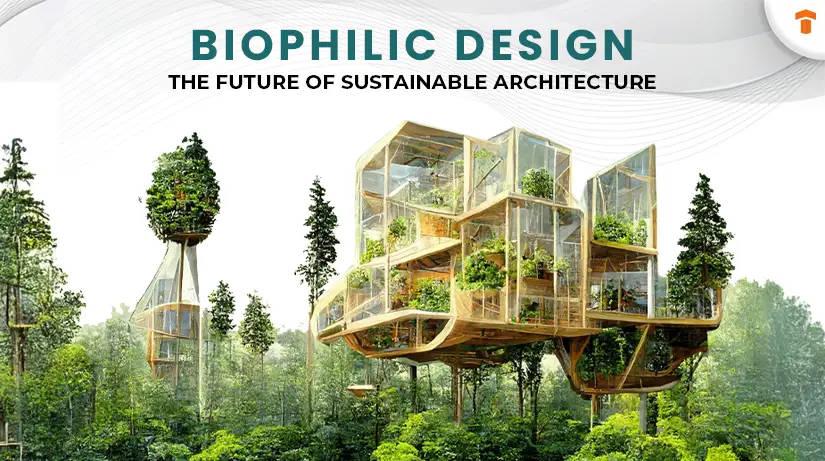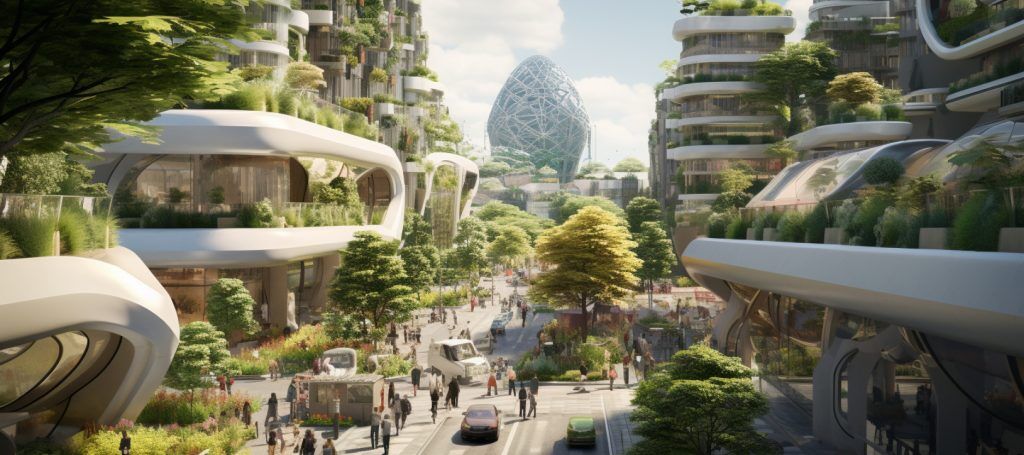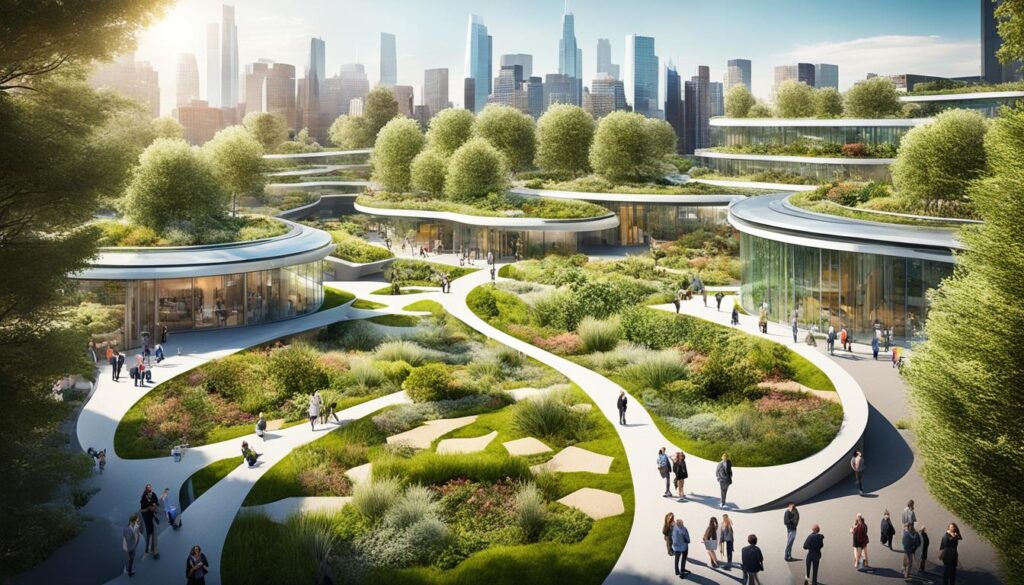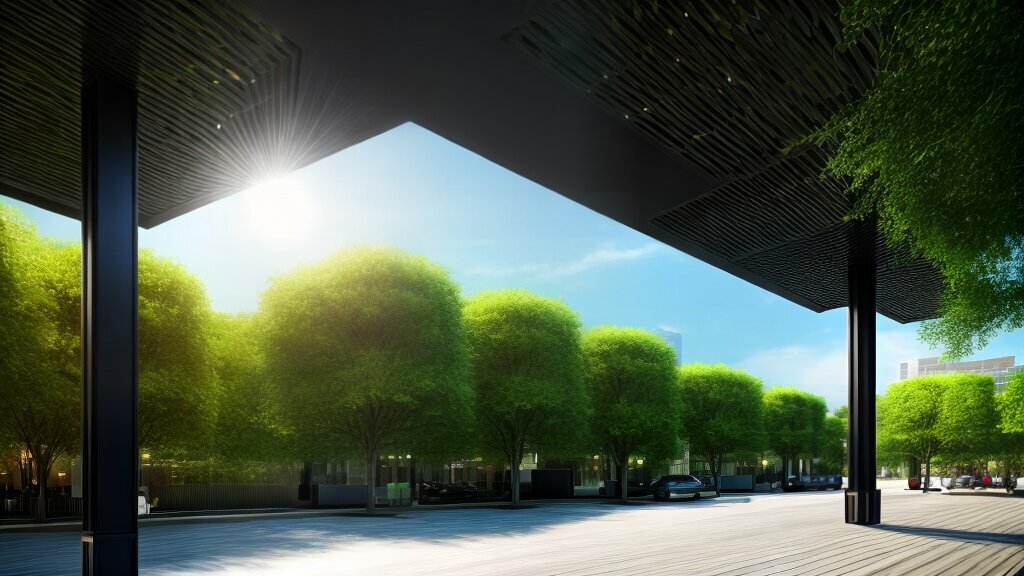Maximizing Sustainability: The Role of Integrated Water Systems in Biophilic Design
Biophilic design is an approach that seeks to connect individuals with nature, thereby enhancing built environments through the incorporation of natural elements.
Water serves a crucial role in this design philosophy, functioning not only as an aesthetic feature but also as a vital component of sustainability.
This article examines the importance of water in biophilic design, with a particular emphasis on integrated water systems that optimize its usage.
By exploring natural water features, rainwater harvesting, and greywater recycling, readers can gain insights into how these systems can transform spaces while promoting ecological harmony and sustainability.
What is Biophilic Design?
Biophilic Design represents an innovative methodology in architecture and urban planning that endeavors to establish a connection between individuals and nature by integrating natural elements and ecosystems into the built environment.
This design philosophy underscores the significance of cultivating a human-nature relationship through architectural practices that enhance psychological well-being and sensory experiences.
By incorporating features such as green roofs, living walls, and water elements into structures, biophilic design aspires to improve environmental health, promote biodiversity, and create restorative environments that contribute to an enhanced overall quality of life.
Why is Water Important in Biophilic Design?
Water is an essential component of biophilic design, functioning not only as an aesthetic element but also as a vital feature that enhances ecological design and urban sustainability.
The integration of water features into urban environments fosters a connection to natural water systems, thereby improving water quality and promoting biodiversity within ecosystems. Furthermore, the presence of water can facilitate sensory experiences that contribute to psychological well-being and environmental health.
Additionally, it plays a critical role in stormwater management and climate resilience.
What Are the Benefits of Using Water in Biophilic Design?
The incorporation of water into biophilic design presents numerous and diverse benefits, which encompass ecological, psychological, and social dimensions. By integrating water features such as ponds, fountains, and rain gardens, urban planners can enhance biodiversity, improve water quality, and promote ecosystem services.
These features create immersive environments that foster community engagement and contribute to psychological well-being by offering calming sensory experiences that connect individuals with nature.
Research has demonstrated that the presence of water can lower stress levels, thereby enhancing mental health and overall quality of life. For example, community spaces that incorporate tranquil water bodies serve as gathering locations where individuals can relax, interact, and rejuvenate.
Studies indicate a correlation between access to water features and increased physical activity, as people are naturally drawn to these inviting environments.
Furthermore, water elements such as cascading waterfalls and reflective pools can support biodiversity by attracting wildlife, creating habitats, and promoting ecological balance within urban settings.
Notable examples, such as New York’s High Line Park and Singapore’s Gardens by the Bay, illustrate how well-designed water features can unite communities while nurturing the surrounding ecosystem, ultimately enhancing the livability and enjoyment of urban areas.
What Are Integrated Water Systems?
Integrated water systems represent a comprehensive approach to the management of water resources that effectively incorporates a range of water management techniques, including stormwater management, rainwater harvesting, and water recycling.
This innovative framework is critical for sustainable architecture and urban planning, as it fosters water conservation while enhancing climate resilience in built environments.
By harmonizing natural water systems with human activities, these systems strive to preserve the balance of water resources and support the ecological integrity of urban spaces.
What Are the Different Types of Integrated Water Systems?
Integrated water systems encompass a variety of methodologies aimed at improving water management and conservation, with key approaches including rainwater harvesting, greywater recycling, and stormwater management.
These systems employ innovative, water-efficient technologies to capture, treat, and reuse water resources, thereby significantly reducing environmental impact while fostering urban ecology and sustainability. By utilizing sustainable materials and practices, these systems contribute to a resilient water infrastructure that supports biodiversity and ecological integrity.
For example, rainwater harvesting systems collect rainfall from rooftops for non-potable applications, thereby alleviating demand on municipal water sources and mitigating flooding risks. Conversely, greywater recycling involves the treatment of used water from baths and sinks for irrigation purposes, conserving valuable drinking water. Stormwater management techniques incorporate the creation of permeable surfaces and green roofs, which facilitate the absorption of runoff and reduce urban heat.
Cities such as Melbourne and San Francisco exemplify successful implementations of these systems, demonstrating their significant contributions to sustainable urban development.
Through the integration of these methodologies, municipalities not only achieve considerable water conservation but also enhance the overall resilience of urban environments, thereby promoting a higher quality of life for residents.
How Do Integrated Water Systems Work in Biophilic Design?
Integrated water systems are essential components of biophilic design, significantly improving water management practices within urban environments and contributing to sustainable architecture and landscape integration.
By integrating water features into design elements such as living architecture and green infrastructure, these systems foster a harmonious relationship between humans and nature. Their effective operation supports climate adaptation measures that enhance urban resilience and ecological sustainability.
This integration not only facilitates effective stormwater management but also promotes biodiversity by creating habitats within urban landscapes. For example, elements such as rain gardens and green roofs mitigate flooding risks by absorbing excess rainfall while simultaneously improving air quality and reducing urban heat effects.
Additionally, incorporating reflective ponds or water walls enhances aesthetic appeal and promotes psychological well-being by engaging residents with natural elements, thereby enriching their daily experiences. Such implementations illustrate the multifaceted benefits of innovative water management strategies in the pursuit of sustainable and livable cities.
What Are the Key Elements of a Successful Integrated Water System in Biophilic Design?
The essential components of a successful integrated water system within the framework of biophilic design encompass natural water features, rainwater harvesting systems, greywater recycling mechanisms, and the integration of green roofs and walls.
By effectively incorporating these elements, urban environments can significantly improve their ecological footprint and promote biodiversity while ensuring the sustainable management of water resources.
This comprehensive approach not only supports ecosystem services but also fosters engaging and restorative environments for the community.
1. Natural Water Features
Natural water features, such as ponds, streams, and fountains, are vital elements of biophilic design, offering both aesthetic appeal and ecological advantages. These features foster biodiversity, support ecosystem services, and enhance urban ecology by creating habitats for wildlife.
The presence of water contributes positively to psychological well-being through calming sensory experiences that facilitate a deeper connection to nature.
Incorporating these elements into urban environments not only enhances the visual appeal of the landscape but also plays a significant role in stormwater management, mitigating the risk of flooding while naturally filtering pollutants.
By attracting various species, these water bodies are integral to maintaining healthy ecosystems and promoting biodiversity. Furthermore, community engagement is heightened, as the shared spaces surrounding these features frequently transform into hubs for social interaction, recreation, and educational opportunities.
Whether it is a dynamic fountain in a city plaza or a tranquil pond in a park, these natural water features encourage residents to engage with their surroundings and recognize the importance of sustainable urban design.
2. Rainwater Harvesting
Rainwater harvesting is an essential practice within integrated water management systems that captures and stores rainwater for various applications, significantly aiding in water conservation and promoting sustainable architecture. This method not only diminishes dependence on municipal water supplies but also enhances climate resilience in urban planning by effectively managing stormwater.
By incorporating rainwater harvesting into biophilic design, architects and urban planners can develop more sustainable and resource-efficient built environments.
The process commences with the collection of rainwater from surfaces such as rooftops, which is subsequently directed into storage systems, including tanks or cisterns. This harvested water can be utilized for multiple purposes, ranging from irrigation to toilet flushing, and may even serve potable uses when appropriately treated.
The advantages of rainwater harvesting extend beyond mere water conservation; it cultivates a more harmonious relationship between urban environments and nature through the integration of green infrastructure. Implementing such systems can mitigate flood risks and reduce runoff, thereby contributing to healthier urban ecosystems.
Ultimately, rainwater harvesting stands out as a cornerstone of innovative water management solutions, fostering sustainability and resilience in rapidly growing cities.
3. Greywater Recycling
Greywater recycling represents a crucial element of effective water management within integrated water systems, facilitating the treatment and reuse of wastewater generated from sinks, showers, and washing machines. This practice promotes sustainability by conserving water resources and reducing the ecological footprint of buildings while employing water-efficient technologies.
The incorporation of greywater recycling into biophilic design not only supports urban ecology but also enhances resilience in water management.
The functionality of greywater recycling systems is of utmost importance, as they redirect potentially wasted water back into circulation for purposes such as irrigation or toilet flushing, thereby minimizing the demand for freshwater supplies.
This innovative approach not only preserves essential resources but also fosters the development of urban green spaces, enhancing the aesthetic and environmental quality of cities.
Successful implementations in various urban developments illustrate how greywater systems can improve sustainable material usage, thereby promoting a circular economy within communities.
As advocates for integrated water systems continue to champion its adoption, the broader implications for urban ecology become increasingly evident, paving the way for healthier living environments.
4. Green Roofs and Walls
Green roofs and walls represent innovative aspects of biophilic design that integrate living architecture into urban environments, thereby promoting biodiversity and enhancing environmental health. These features not only provide insulation and energy efficiency but also create habitats for various species, thereby supporting urban biodiversity.
By incorporating green roofs and walls into integrated water management systems, cities can improve air quality and create restorative environments that foster a deeper connection between residents and nature.
These installations play a critical role in addressing climate change by mitigating the urban heat island effect and managing stormwater runoff. Aesthetically, they transform uninspiring urban landscapes into vibrant green spaces, offering psychological benefits that contribute to overall well-being.
The presence of greenery not only beautifies the environment but also attracts wildlife, thereby creating valuable ecosystems within densely populated areas.
By harmonizing human living spaces with nature, green roofs and walls promote sustainability, ultimately leading to healthier, more resilient urban habitats that enhance both ecological networks and community enjoyment.
What Are Some Examples of Successful Integrated Water Systems in Biophilic Design?
Numerous examples of successful integrated water systems within biophilic design underscore the significant influence of sustainable architecture and urban planning on improving environmental health and community well-being.
These case studies showcase innovative strategies for ecological restoration and the application of nature-based solutions that enhance ecosystem services while fostering immersive environments for residents.
1. The Solaire Building in New York City
The Solaire Building in New York City stands as a pioneering example of integrated water systems and biophilic design, exemplifying sustainable architecture that effectively aligns with its urban environment. This residential structure incorporates green roofs, efficient water management practices, and natural water features, creating a restorative living space that fosters community engagement and ecological sustainability.
The design expertly integrates elements that not only enhance aesthetic appeal but also fulfill an ecological function, including rainwater harvesting systems and permeable surfaces that mitigate runoff. By incorporating abundant greenery and natural light, the Solaire facilitates a deeper connection between residents and the surrounding ecosystem, thereby promoting a lifestyle that is in harmony with nature.
These features significantly reduce the building’s environmental footprint while also contributing positively to urban biodiversity, establishing the Solaire as a benchmark for future developments in sustainable living. Ultimately, the Solaire exemplifies the potential for urban structures to coexist with nature, offering valuable insights into ecological stewardship for cities around the globe.
2. The California Academy of Sciences Building in San Francisco
The California Academy of Sciences Building in San Francisco serves as a prime example of the integration of water systems within biophilic design. Its green roofs not only support biodiversity but also enhance energy efficiency.
This architectural marvel functions as both a museum and a research institution while highlighting the significance of sustainable practices in urban infrastructure through its innovative water management systems.
By incorporating features such as rainwater harvesting, the facility effectively reduces its dependence on municipal water supplies, thereby minimizing its ecological footprint. The building’s design optimizes natural light and airflow, creating a more inviting atmosphere while decreasing the reliance on artificial heating and cooling systems.
The rich biodiversity fostered by its landscaped terraces serves not merely as an aesthetic enhancement but plays a vital role in educating visitors about ecosystems and their preservation. Through exhibits and interactive experiences that underscore the importance of ecological conservation, this structure stands as a beacon for environmental awareness, inspiring visitors to consider sustainability in their own lives.
3. The Bullitt Center in Seattle
The Bullitt Center in Seattle exemplifies sustainable architecture through its incorporation of integrated water systems and biophilic design principles, with a strong focus on water conservation and ecological sustainability. This innovative building features rainwater harvesting, greywater recycling, and green roofs, showcasing a commitment to minimizing its ecological footprint while providing an inspiring workspace for its occupants.
The integration of these systems not only ensures efficient resource utilization but also fosters a deeper connection between the occupants and the natural elements in their surroundings. By prioritizing natural light, ventilation, and greenery, the center enhances the overall well-being of its users, which is a fundamental aspect of the biophilic approach.
This design philosophy contributes to creating a more productive environment and significantly influences urban planning by encouraging other developments to adopt sustainable practices that support both human health and environmental integrity.
The Bullitt Center serves as a testament to how thoughtful architecture can facilitate the development of vibrant, sustainable communities.
What Are the Challenges and Limitations of Implementing Integrated Water Systems in Biophilic Design?
The implementation of integrated water systems in biophilic design presents various challenges and limitations that require careful consideration to ensure successful outcomes.
Factors such as cost, maintenance, climate conditions, and specific location constraints can significantly influence the feasibility and effectiveness of these systems within the context of sustainable architecture and urban planning.
1. Cost
The cost associated with the implementation of integrated water systems in biophilic design can present a significant barrier for numerous projects, as the initial investment required for sustainable architecture frequently surpasses that of traditional building practices. Budget constraints and financial considerations may restrict developers’ capacity to integrate these innovative systems.
It is crucial to acknowledge that the financial ramifications of these systems extend beyond initial costs. By conducting an analysis of long-term operational expenses and potential savings resulting from reduced water consumption and lower energy costs, stakeholders can begin to appreciate the value of such investments.
Integrated water systems have the potential to enhance property value and attract environmentally conscious buyers, thereby justifying the initial expenditure. By evaluating aspects such as maintenance, durability, and resilience in the face of climate variability, it becomes evident that the initial financial commitment may yield substantial economic benefits over time.
2. Maintenance
The maintenance of integrated water systems within biophilic design is essential for ensuring their longevity and effectiveness; however, it may also result in increased operational costs. Proper upkeep is critical for maintaining the functionality and sustainability of these systems while promoting environmental health in urban areas.
Regular monitoring, timely repairs, and strategic upgrades are integral components of the maintenance process, as they prevent minor issues from escalating into significant and costly problems. It is imperative to recognize that without diligent care, even the most advanced water systems can deteriorate, undermining their intended benefits.
To facilitate effective maintenance, stakeholders should consider establishing a dedicated maintenance schedule and providing training for personnel on best practices. Integrating these maintenance strategies into broader sustainability frameworks not only enhances system efficiency but also contributes to long-term cost savings.
A proactive approach is essential to ensure that these systems remain resilient, ultimately supporting urban biodiversity and fostering a healthier ecosystem.
3. Climate and Location
Climate and location are crucial factors that significantly influence the effectiveness of integrated water systems within biophilic design, as environmental conditions can vary considerably across different regions. It is essential to make site-specific design considerations to ensure that these systems operate effectively and sustainably, adapting to local weather patterns and ecological characteristics.
Project developers must understand the unique hydrological cycles and microclimates present in their selected areas. For example, coastal communities may require designs that effectively manage saltwater intrusion and flooding, while arid regions may prioritize maximizing water capture and storage.
Successful implementations, such as the rainwater harvesting systems employed in Singapore, demonstrate the advantages of designing with local climates in mind, facilitating resilient water management.
Furthermore, incorporating indigenous vegetation can enhance the efficiency of integrated water systems, fostering more sustainable practices that address the specific needs and challenges of each locality.
How Can Biophilic Design and Integrated Water Systems Contribute to Sustainable Development?
Biophilic design and integrated water systems are essential components in promoting sustainable development, as they enhance environmental stewardship and bolster ecological resilience within urban settings.
By incorporating natural elements alongside innovative water management practices, these methodologies encourage community engagement and cultivate environments that benefit both individuals and the natural ecosystem.
Frequently Asked Questions
What is the concept of Integrated Water Systems in Biophilic Design?
Integrated Water Systems in Biophilic Design is an approach that incorporates natural water systems into the design of human-made spaces. This includes the use of rainwater harvesting, greywater recycling, and other sustainable water management practices.
What are the benefits of incorporating Integrated Water Systems in Biophilic Design?
Plus reducing water usage and promoting sustainability, Integrated Water Systems in Biophilic Design can also improve the overall health and well-being of occupants by creating a more natural and calming environment.
How does rainwater harvesting fit into Integrated Water Systems in Biophilic Design?
Rainwater harvesting involves collecting and storing rainwater for later use, which can be used to irrigate plants, flush toilets, and even provide drinking water in some cases. This practice aligns with the principles of Biophilic Design by incorporating natural water sources into human-made spaces.
What is greywater recycling and how does it relate to Biophilic Design?
Greywater recycling is the process of collecting and treating wastewater from sources such as sinks, showers, and washing machines for reuse in non-potable applications. By utilizing this sustainable water management practice, Biophilic Design seeks to mimic natural water cycles and reduce the strain on traditional water sources.
Can Integrated Water Systems in Biophilic Design be applied to all types of buildings?
Yes, Integrated Water Systems in Biophilic Design can be incorporated into a variety of building types, including residential, commercial, and even industrial spaces. This approach can be scaled to fit the needs of any building and can be customized to meet specific sustainability goals.
Are there any challenges to implementing Integrated Water Systems in Biophilic Design?
Like any sustainable design practice, there may be challenges in implementing Integrated Water Systems in Biophilic Design, such as cost and technical limitations. However, with proper planning and expertise, these challenges can be overcome to create a more eco-friendly and human-centered space.

I’m Bruno, an architect with a deep passion for Biophilic Design in Urban Architecture. Throughout my career, I’ve focused on integrating natural elements into urban planning, and I created this site to share my insights and foster a deeper understanding of how biophilic principles can significantly enhance urban living. Dedicated to sustainable development, I continually explore innovative design solutions that promote both environmental and human well-being in city landscapes.














Publicar comentário